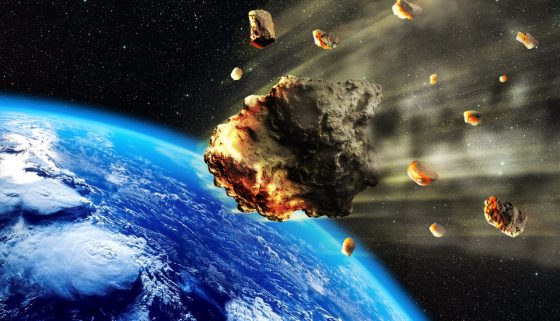
New research from a team of Czech scientists, which discovered new asteroids traveling around our planet, suggests that the risk of earth being hit by one of those extraterrestrial rocks is increasing. The likelihood of an asteroid striking Earth increased after the team studied 144 large meteors from the Taurids, a meteor stream – the very stream which appears in our skies twice a year. Most of these asteroids are small and pose no real threat. But some are alarming in size.
The team of Czech scientists discovered a new branch of the Taurid stream phenomenon containing at least two asteroids measuring a whopping 200-300 meters (220-330 yards) in diameter. This branch likely includes even larger undiscovered asteroids, according to a statement from the Academy of Sciences of the Czech Republic.
The Taurid meteoroid stream produces at least four meteor showers over Earth. Two of those streams are active from the end of September until the beginning of December, and two from the end of May to the middle of July. Earth encounters the newly discovered branch every few years for about three weeks. Scientists say that during this time, the chance of an impact with a sizeable asteroid (measuring up to tens of meters) is significantly greater. The new digital autonomous observatories of the European Fireball Network spotted the fireballs over Czech Republic (at 13 stations), Austria (1 station) and Slovakia (1 station).
The meteors analyzed by the Czech astronomy team were from a 2015 study when the stream’s activity was enhanced. Details of the study are published in Astronomy & Astrophysics, and the researchers say further research is vital to gain a better understanding “of this real source of potentially hazardous objects.” The scientists also warn that the meteors could cause significant regional or even continental damage should they actually impact our earth. The astronomers are urging a concentrated search for more Taurid asteroids, to see if any potentially threatening ones exist.
Although no threatening objects have yet been discovered, the Czech team doesn’t want to take any chances. The prospect of continental damage and regional catastrophe coming from space is alarming and more observations will be needed before drawing any more conclusions based on the Czech team’s research, as there could be many other factors which impact this data.
For example, the debris stream from Comet Encke is influenced in part by the gravity of Jupiter, a massive gas giant planet that is known to influence the orbits of comets and asteroids in that region of the solar system. As such, there are instances in which Jupiter’s gravity can redirect the debris so that more particles hit the Earth. During one of these “enhanced” Taurid meteor showers in 2015 caused by Encke’s redirection, the astronomers from the Czech Academy of Sciences analyzed the 144 Taurid fireballs (meteors that produce a large flash when they hit the atmosphere.)
NASA is currently working to anticipate the possible collision of a massive cosmic particle with Earth and assess any potential impact risks. It operates a collision monitoring system called Sentry that routinely scans for asteroids and determines the likelihood of impact over the next 100 years. It also freely catalogs these space rocks at the JPL Small-Body Database Browser.
A few years ago, NASA created a Planetary Defense Coordination Office to bring together the observations of all US networks looking for near-Earth asteroids. They also want to help come up with plans in the unlikely chance that the Earth is under threat from an asteroid strike.
The increase in a possibility of a strike is alarming, but keep in mind, it’s only a possible threat.





0 Comments